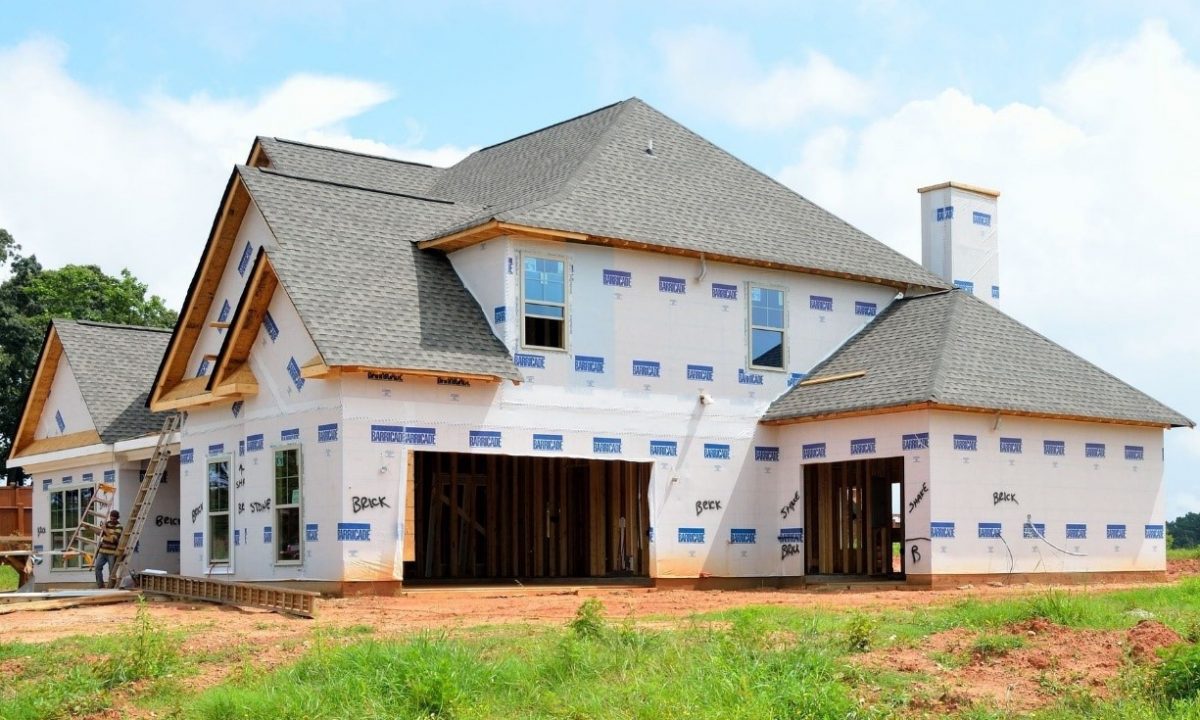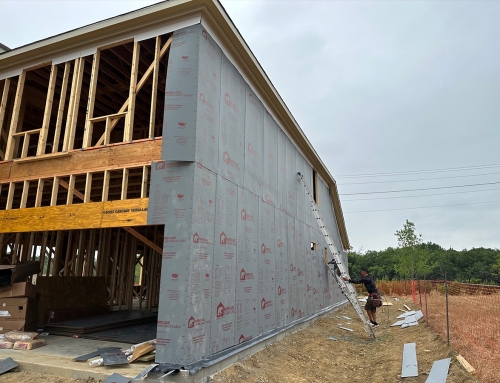Determining the optimum permeability of a building wrap is essential to managing moisture intrusion and accumulation. Moisture typically gets in a wall system during severe weather, condensation, or plumbing leaks.
Permeability (measured in US Perms) is a wall system’s ability to drain and dry the moisture in at least one direction; however, two directions is better. The greater the perm, the faster the material dries out; however, too high a perm may allow the inward movement of water to the wall system.
Balancing the inward and outward movement of water in a wall system requires a building wrap with optimum permeability, like Barricade® Building Wrap.
Moisture Control is Essential to a Durable and Healthy Building
Preventing moisture infiltration and accumulation to the building envelope is crucial to the design of a durable and healthy structure. Moisture will cause the growth of mold and mildew. Mold and mildew can cause structural failure (rot) and can also significantly degrade the indoor environmental quality (IEQ) of a building and home.
Mold Degrades a Building or Home
Mold, which is a fungus, causes wood rot. Rot occurs when wood decay fungi comes in contact with a food source (wood), oxygen, heat, and moisture. The fungi will only grow in the presence of all four elements.
Specifically, mold grows in temperature between 40° and 100°F. Molds also develop when the humidity in the air is above 80 percent. As the fungi grow, it digests the damp wood and effectively destroys a building or home. The rotted wood also attracts insect and other pests, causing more damage to the structure. Preventing the growth of mold in a wall system is essential to the integrity of a structure.
Mold is Unhealthy
Mold is also unhealthy for the occupants of a structure. Mold produces irritants and allergens. Inhaling or touching mold or mold spores may cause allergic and asthmatic reactions in some people.
Furthermore, black mold produces mycotoxins which are especially harmful and can cause severe long-term health effects, particularly in young children and those with weak immune systems. Stopping the growth of mold in a wall system is critical to the health of the occupants of a home or building.
Controlling Moisture in the Wall System of a High-Performing Building
Achieving a balance between stopping water from entering a wall system, yet allowing moisture that accumulates within the wall system to escape is challenging. The sheathing material is the first line of defense against moisture entering a structure. However, common sheathings like gypsum board and oriented strand board (OSB) are highly permeable and can allow moisture to intrude the wall system. It is essential, particularly with permeable sheathings, to apply a weather-resistant barrier (WRB), like building or house wrap.
WRB’s control unwanted moisture intrusion, yet, if the water gets into the wall system, the WRB allows the moisture to evaporate away from the wall system.
The Optimal Permeability Rating of a Building Wrap
The optimum perm rating of a building wrap stops water from entering the wall cavity; however, it also allows moisture vapor in the wall cavity to escape. If the WRB’s perm is too high, moisture will penetrate the wall system from the outside. If the WRB’s perm is too low, it will trap the moisture within the wall system.
According to Joseph Lstiburek, a founding principal of Building Science Corporation, the ideal WRB perm, for balancing the inward and outward movement of moisture in a wall system is between 10 and 20 perms.
Barricade® Building Wrap Provides the Optimum Perm for Moisture Control
Preventing the inward flow of moisture through the exterior of a structure, while still allowing the outward transfer of moisture trapped in a wall system, requires a WRB with a perm rating of between 10 and 20, like Barricade® Building Wrap.
Barricade Wrap has a rating of 11 US Perms and will manage moisture accumulation, which ensures a durable and healthy building or home. In addition to vapor permeability, Barricade Building Wrap provides water and air resistance, UV resistant, tear strength, and temperature resistance.
- Water Resistance – Three tests measure a house wrap’s water resistance. ASTM D779 (boat test), CCMC 07102 (pond test), and AATCC Test Method 127. Barricade Wrap passes all these tests.
- Air Resistance – Barricade Wrap, as an air barrier material, is in accordance with IRC Section N1102.4.1 and IECC Section 402.4 and 502.4.
- UV Inhibitors – Barricade Wrap can withstand twelve months of UV-exposure without damage occurring.
- Tear Strength – Barricade Wrap has a tear-stop design with superior strength.
- Temperature resistance – AC38 Section 3.3.4: (Cold Mandrel Bend Test) ensures the material won’t crack at low temperatures.
The optimum permeability of a building wrap manages moisture intrusion and ensures a durable and healthy home or building. Research suggests that a WRB with a perm rating between 10 and 20 will best balance the inward and outward movement of moisture in a wall system. An excellent product for producing optimum permeability, and preventing wood rot and the growth of unhealthy mold is Barricade® Building Wrap.







